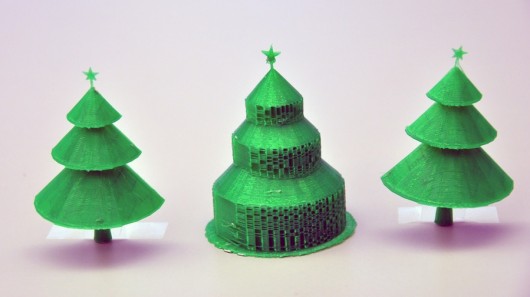
[A] new 3D printer algorithm that claims to provide super-efficient 3D printing of Christmas trees with zero material waste may be just the ticket. Using a system of printing entitled “Approximate Pyramidal Shape Decomposition,” the algorithm also promises a way to produce accurate molds for casting chocolate Santas and reindeer too.
Computer science professor Richard Zhang from Simon Fraser University, in conjunction with visiting PhD candidate Ruizhen Hu from Zhejiang University, China, lay claim to having developed the world’s first algorithm for decomposing a 3D object into what are known as pyramidal parts.
Pyramidal parts look just like they sound; they have a flat base and triangular sides that rise up to meet at a point, resulting in a shape with no overhanging parts. This shape is apparently the optimal building block for 3D printing because it wastes no material in its creation and also saves print time.
via Gizmag
Image: Simon Fraser University






